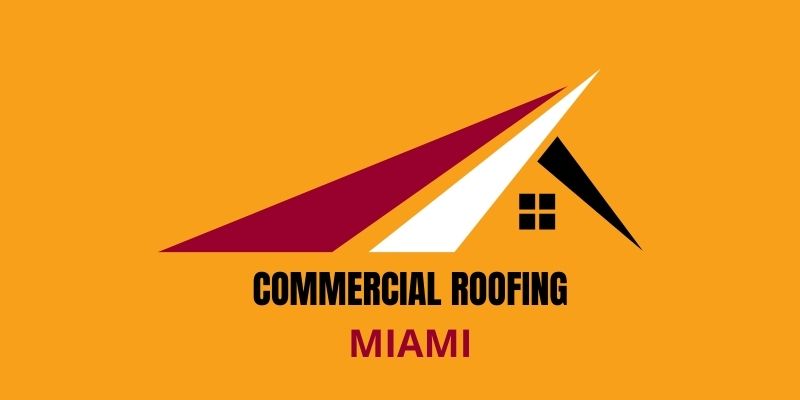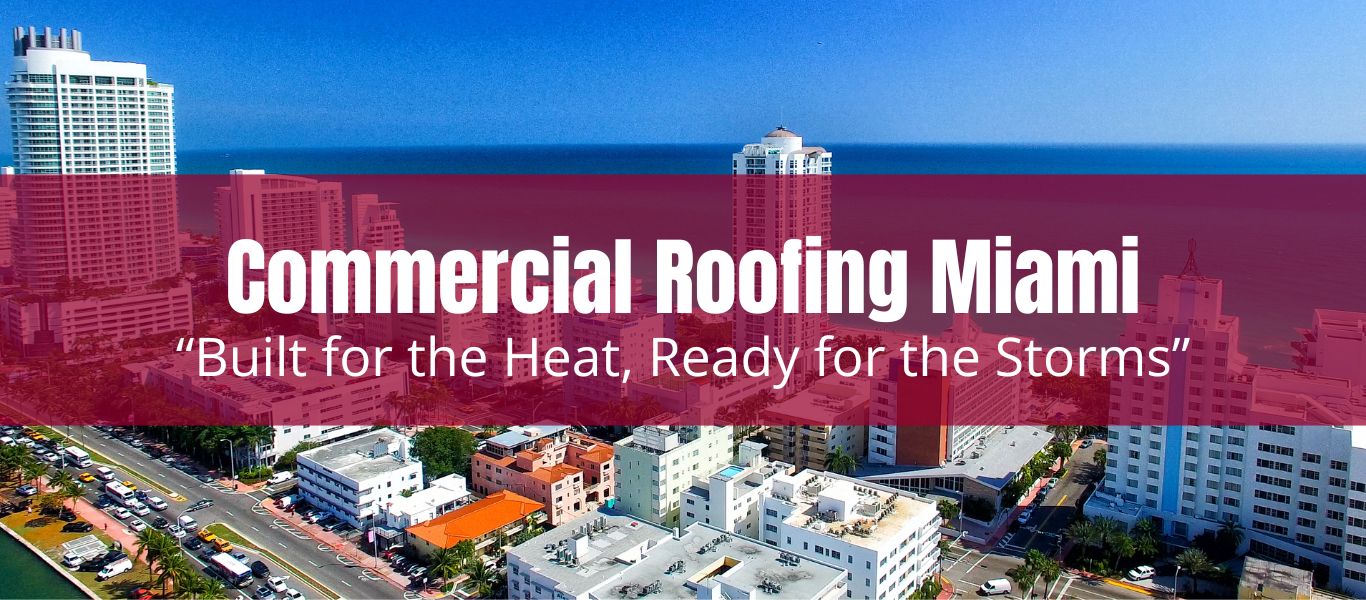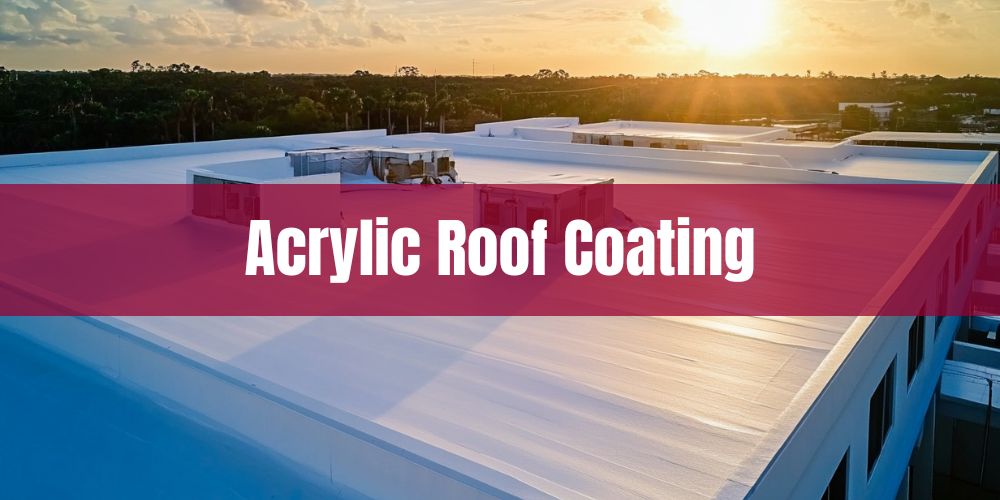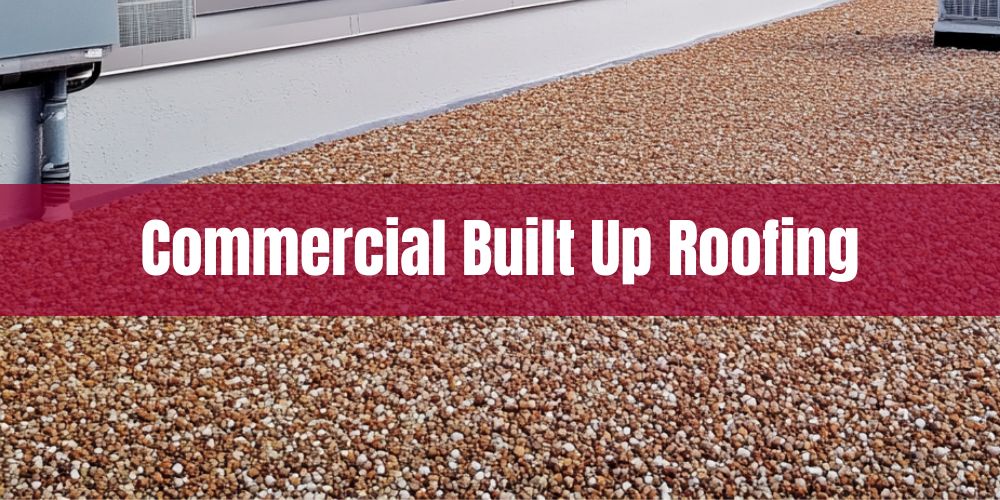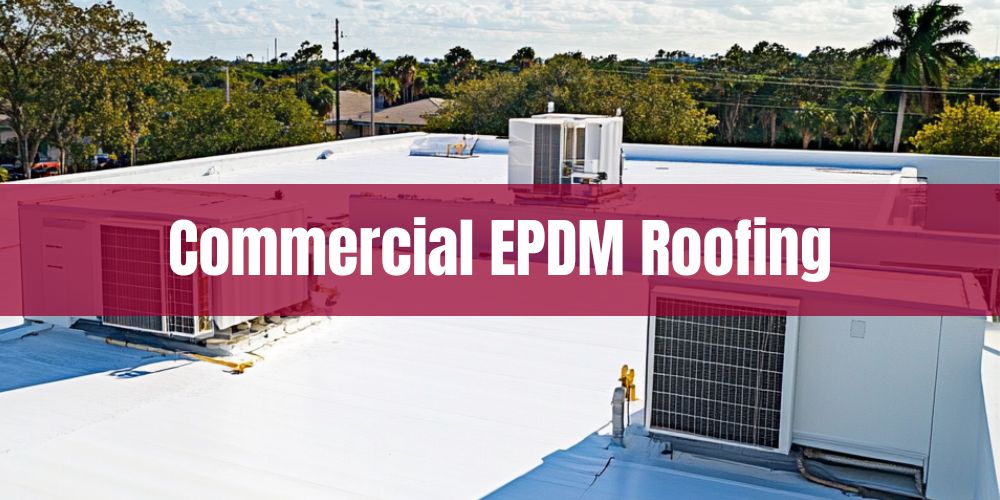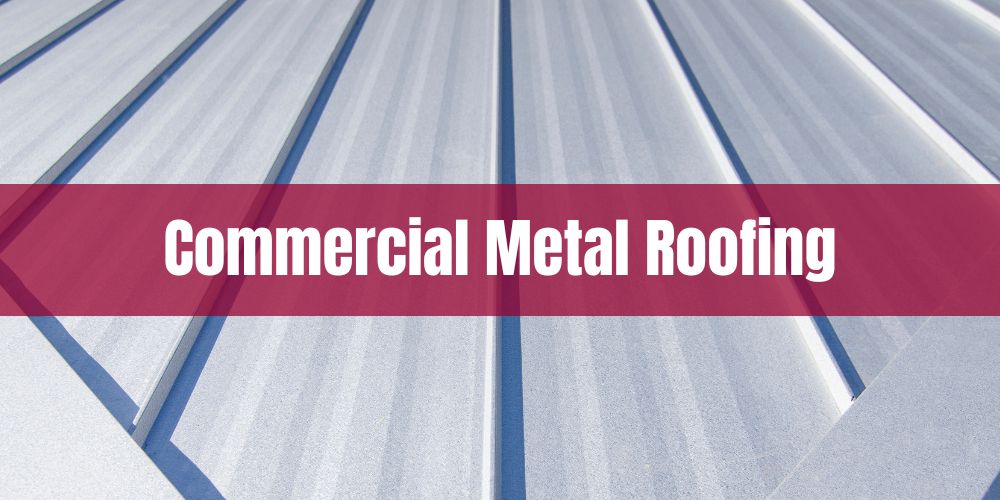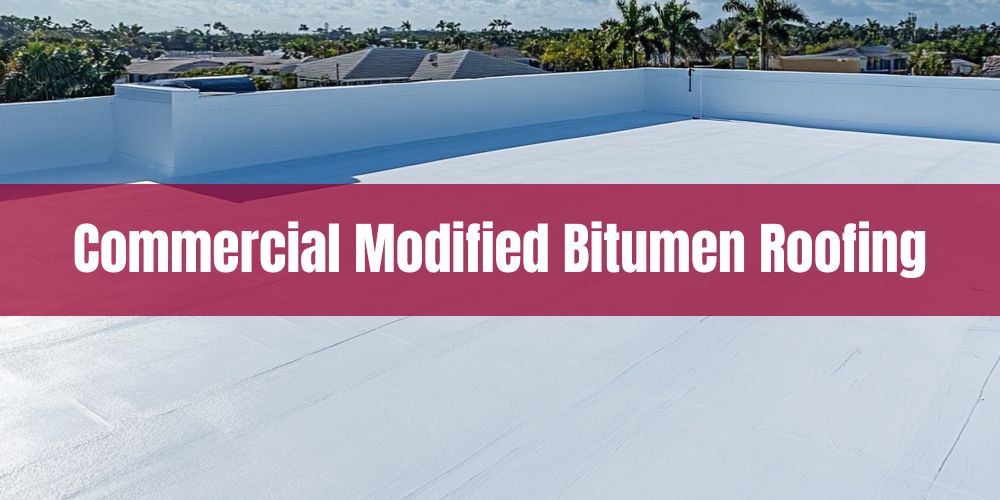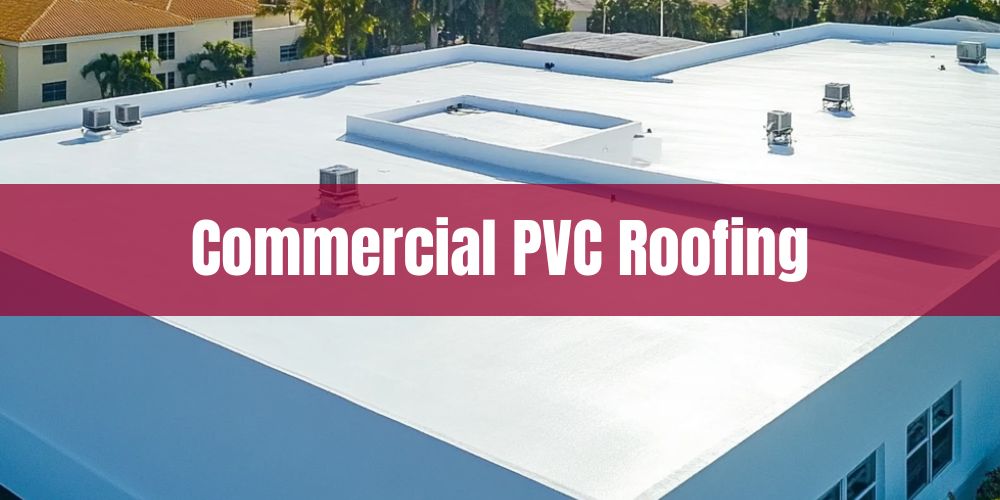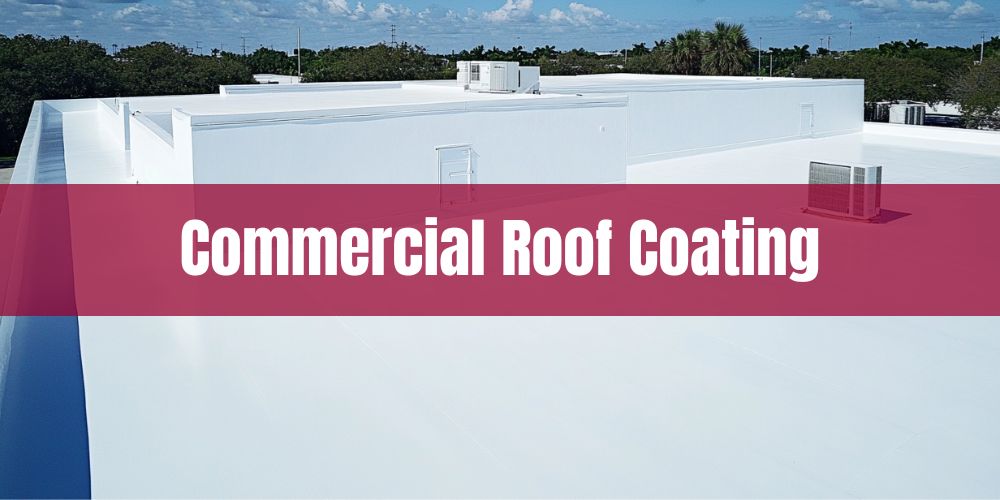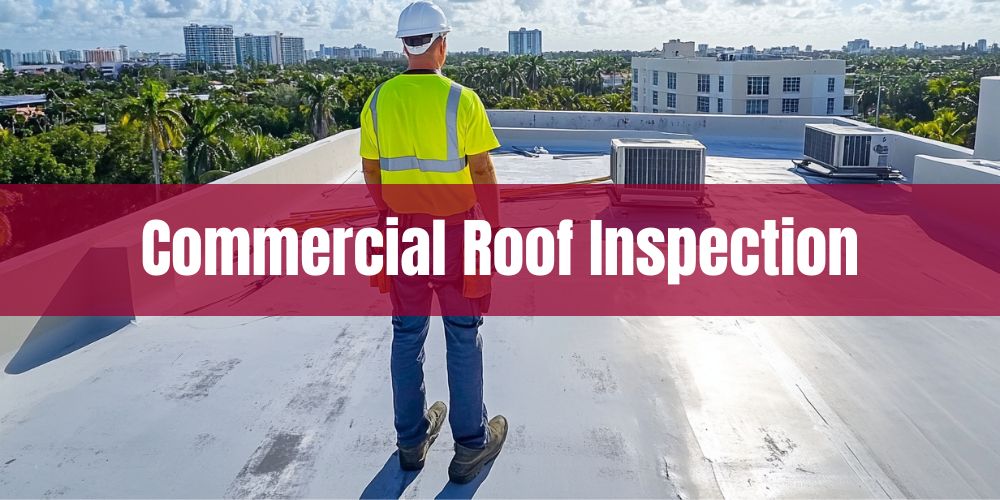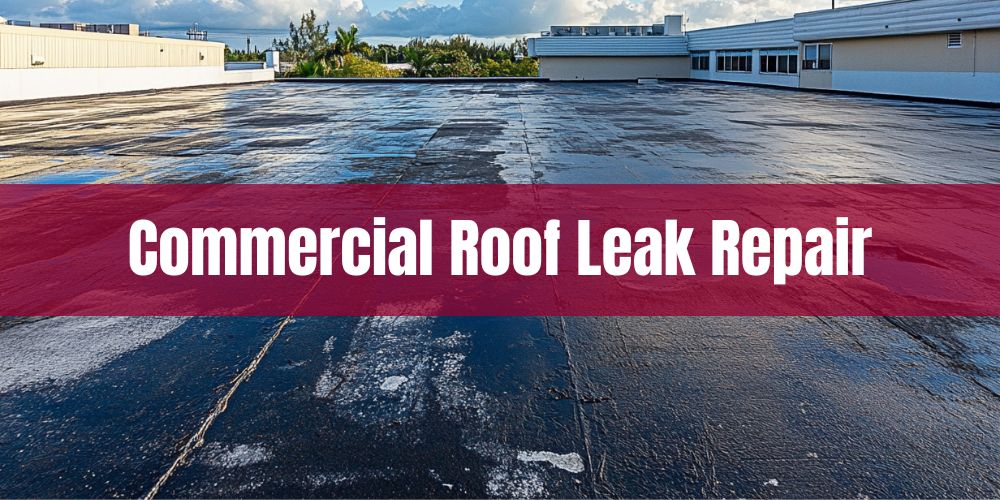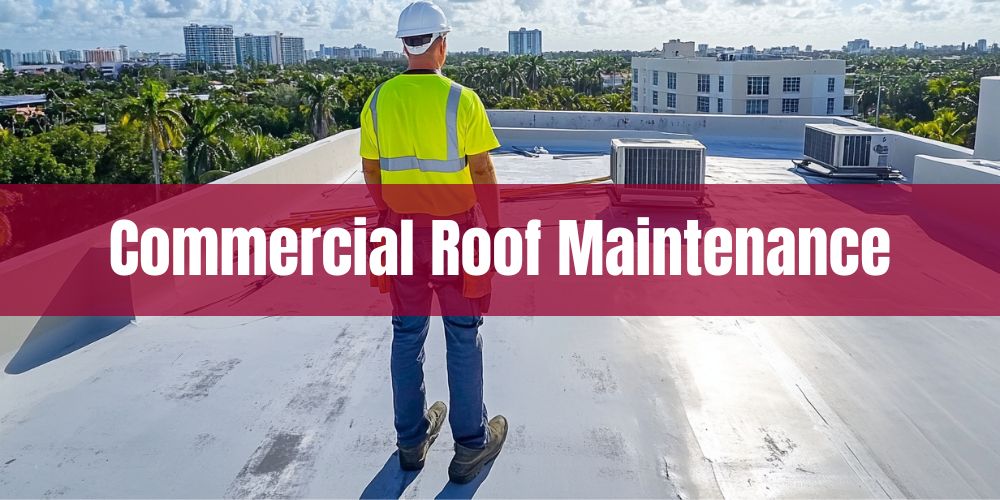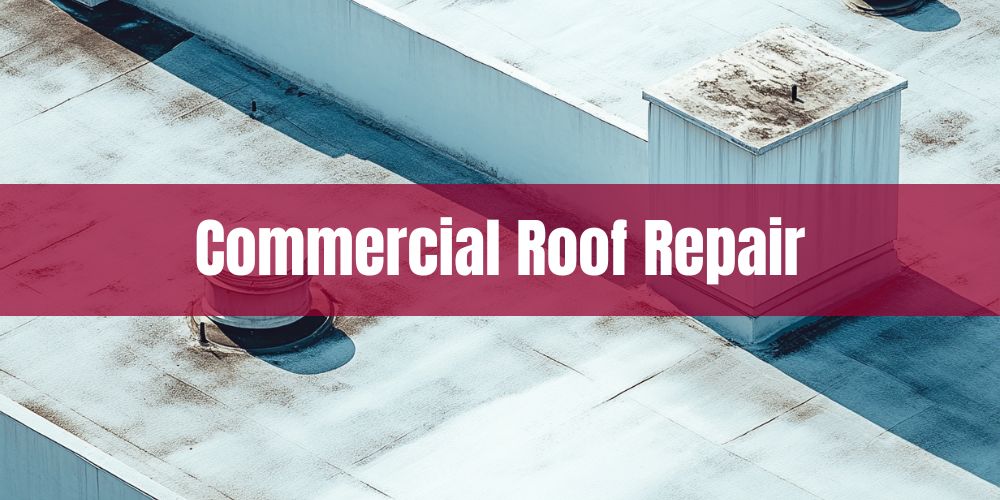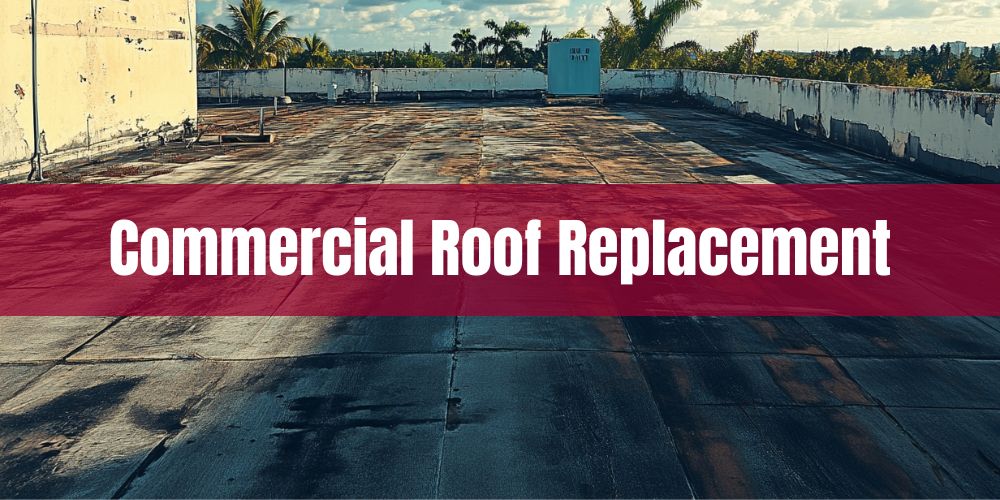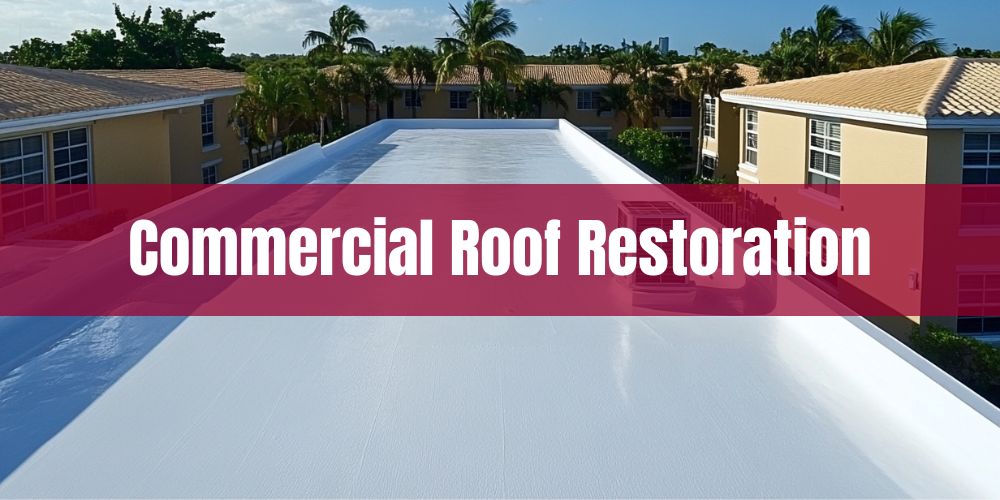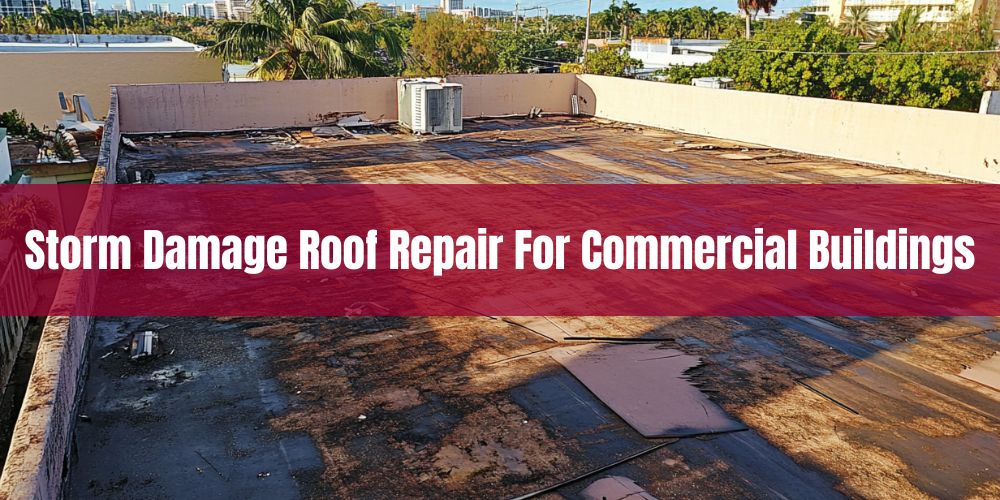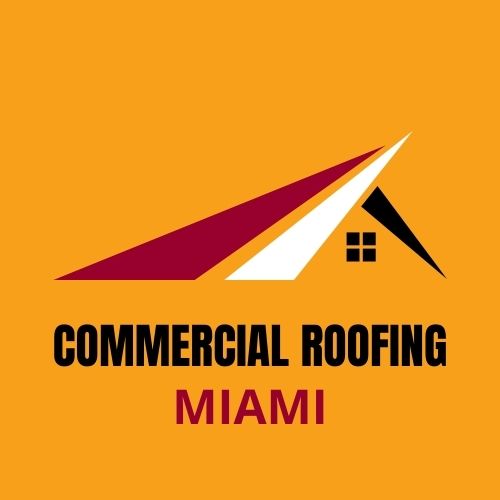Commercial Roofing Miami: Specialist Contractors For Miami and South Florida
Commercial Roofing Miami specializes in delivering high-performance commercial and industrial roofing services tailored to meet the unique challenges of South Florida’s extreme climate. From searing UV rays and heavy tropical downpours to hurricane-force winds and salt-laden coastal air, every roofing solution we provide is engineered to protect. Our full suite of services includes expert installation, precise repair, proactive maintenance, and compliance-grade inspections—all executed with a focus on longevity, efficiency, and structural resilience.
At Commercial Roofing Miami, our motto, “Built for Heat, Ready for Storms,” defines our commitment to safeguarding your property in one of the harshest roofing environments in the country. We utilize proven materials such as TPO, EPDM, modified bitumen, metal roofing systems, and fluid-applied coatings—each selected for its performance in high-temperature, high-moisture conditions. Every system is customized for your building’s design, exposure level, and operational needs, ensuring the highest level of weather resistance and energy efficiency.
Our services extend across Miami-Dade County, serving commercial clients in sectors such as retail, healthcare, manufacturing, education, and multifamily housing. Whether you manage a single facility or a portfolio of properties, we provide scalable, code-compliant roofing solutions that reduce operational risk and long-term maintenance costs. Our experienced technicians and project managers are well-versed in Miami’s stringent building codes and fast-changing permitting landscape, helping to keep your project on track and inspection-ready.
Commercial roofing encompasses the specialized installation, restoration, and upkeep of roofing systems on non-residential structures. These systems differ significantly from residential roofing in scope, complexity, and material application. In Miami’s demanding climate, commercial roofing must deliver superior thermal performance, high wind uplift resistance, and the flexibility to accommodate mechanical systems or reflective coatings. Our approach prioritizes performance and precision, using cutting-edge tools, certified crews, and climate-adapted designs to deliver roofing systems built to perform year after year. At Commercial Roofing Miami, we don’t just install roofs—we engineer long-term protection for your property and peace of mind for your business.
What Is Commercial Roofing?
Commercial roofing refers to the installation, repair, restoration, and ongoing maintenance of roofing systems on commercial properties such as office buildings, warehouses, hospitals, schools, and retail centers. Unlike residential roofing, commercial roofs typically cover larger surface areas and are built using flat or low-slope designs that require advanced waterproofing techniques and durable, weather-resistant materials. These systems often incorporate membranes like TPO, PVC, or EPDM, as well as modified bitumen, metal panels, or fluid-applied coatings—each selected based on building use, environmental exposure, and structural design. Commercial roofing projects demand specialized engineering, adherence to local building codes, and consideration for factors such as drainage, energy efficiency, and rooftop equipment integration. Installation methods vary, but precision is critical, as improper sealing or fastening can lead to long-term performance issues and costly repairs. Professional commercial roofing services also include preventative maintenance programs that extend roof lifespan and minimize unexpected disruptions. Safety protocols, lift equipment, and compliance documentation are often necessary due to the scale and complexity of these projects. Ultimately, commercial roofing focuses on protecting high-value assets, optimizing building performance, and ensuring business continuity.
In Miami, commercial roofing must be engineered to withstand hurricane winds, salt-heavy air, relentless heat, and frequent rain. Every system must be tailored to meet South Florida’s extreme environmental conditions and strict building regulations. Commercial Roofing Miami are specialist commercial roofing contractors who provide a full service across Miami, Fort Lauderdale, Dade County and the South Florida area.
Have a question about an upcoming project?
What Commercial Roofing Systems Are Used in Miami?
In Miami, commercial roofing systems must be selected for their ability to perform under high UV exposure, intense heat, heavy rain, and hurricane-force winds. The most commonly used systems include TPO (Thermoplastic Polyolefin) and PVC (Polyvinyl Chloride) single-ply membranes, which are valued for their reflectivity, energy efficiency, and seam strength. Modified bitumen is also popular due to its multi-layered construction and flexibility under thermal stress, making it ideal for low-slope roofs in fluctuating temperatures. EPDM (Ethylene Propylene Diene Monomer), though less reflective, offers strong durability and weather resistance, especially when reinforced and properly ballasted. For buildings requiring exceptional wind uplift resistance, standing seam metal roofing is used, offering longevity and strength in hurricane zones. Fluid-applied roof coatings, such as silicone and acrylic, are also widely used. These coating are often used for restoration projects to extending the life of aging roofs while adding UV protection and waterproofing layers. Each system is chosen based on the building’s use, exposure, drainage layout, and code requirements unique to Miami-Dade County, where compliance with wind uplift and impact resistance standards is non-negotiable.
- TPO (Thermoplastic Polyolefin)
- PVC (Polyvinyl Chloride)
- Modified Bitumen
- EPDM (Ethylene Propylene Diene Monomer)
- Standing Seam Metal Roofing
- Fluid-Applied Roof Coatings (Silicone or Acrylic)
1. TPO (Thermoplastic Polyolefin)
TPO is a single-ply roofing membrane made from a combination of polypropylene and rubber. It’s typically white, making it highly reflective, which helps reduce heat absorption and keeps commercial buildings cooler. Its seams are heat-welded, creating a strong, watertight bond that resists splitting and peeling over time. In Miami, where high temperatures and UV exposure are constant, TPO is a preferred option for its energy-saving properties and resistance to ozone and chemical exposure. It’s also lightweight and flexible, which helps it perform well under high wind conditions during storm season.
2. PVC (Polyvinyl Chloride)
PVC is another single-ply membrane that offers excellent flexibility and long-term durability. It is chemically resistant, which makes it a smart choice for commercial buildings like restaurants, labs, or industrial sites where oils or harsh substances may be present. PVC membranes are welded at the seams, ensuring a strong barrier against water intrusion. In Miami, PVC is especially valuable because it stands up to ponding water, humidity, and salt-laden air near the coast. It also provides solid wind uplift protection, which is critical in a hurricane-prone region.
3. Modified Bitumen
Modified bitumen is a multi-layered roofing system composed of asphalt reinforced with synthetic rubber or plastic. It’s applied in rolls using heat, cold adhesives, or peel-and-stick methods and usually has a granule surface or protective coating. This system is highly durable and performs well in heavy foot traffic areas or buildings with complex roof details. For commercial properties in Miami, modified bitumen offers strong resistance to intense rainfall and thermal expansion, while its layered construction adds redundancy that enhances waterproofing performance during tropical storms.
4. EPDM (Ethylene Propylene Diene Monomer)
EPDM is a rubber-based roofing membrane known for its long lifespan and resilience. It comes in large sheets, allowing for fewer seams, and it can be installed using adhesives, mechanical fasteners, or ballast. While the standard black version absorbs more heat, white EPDM or coated systems are available to improve energy efficiency in hot climates. In Miami, EPDM is often used on warehouses or facilities where durability and cost-effectiveness matter more than reflectivity. When combined with a reflective coating, it can still meet the demands of Florida’s heat and UV intensity.
5. Standing Seam Metal Roofing
This roofing system uses vertical metal panels with raised seams that lock together, offering a sleek and highly durable design. Metal roofs are known for their longevity, minimal maintenance, and exceptional resistance to high winds. In hurricane zones like Miami, standing seam metal roofing is especially effective due to its ability to withstand uplift forces and severe weather. Aluminum panels are often used in coastal areas because they resist corrosion from salt air, and protective coatings help extend the life of the roof even under continuous sun exposure.
6. Fluid-Applied Roof Coatings (Silicone or Acrylic)
Fluid-applied coatings are liquid products that are rolled or sprayed directly onto existing roofs to seal, waterproof, and extend their service life. Silicone coatings are highly resistant to UV rays and ponding water, while acrylic coatings are more reflective and suitable for dry conditions. In Miami, silicone is widely used due to the region’s frequent rain, heat, and sun exposure. These coatings are an excellent choice for restoring aging roofs without full replacement, offering commercial property managers a cost-effective way to reinforce waterproofing before and after hurricane season.
How Does Commercial Roofing Need To Be Tailored The Unique Climate Of Miami and South Florida?
Commercial roofing in Miami and South Florida must be engineered to withstand extreme heat, high humidity, frequent heavy rainfall, and hurricane-force winds. Roofing systems need strong wind uplift resistance, UV stability, and moisture tolerance to perform reliably in this climate. Materials like TPO, PVC, and modified bitumen are commonly selected for their durability, flexibility, and ability to handle both solar exposure and storm conditions. Additionally, installations must comply with strict local codes, including Miami-Dade’s wind and impact resistance requirements.
- High Wind Uplift Resistance
- UV and Heat Resistance
- Moisture and Humidity Tolerance
- Salt Air Corrosion Protection
- Storm-Ready Design
1. High Wind Uplift Resistance
High wind uplift resistance refers to a roof’s ability to remain secured during extreme wind events, particularly along the edges and corners where pressure is greatest. Without proper attachment systems, commercial roofs can suffer catastrophic damage or full membrane detachment during hurricanes. In regions like West Palm Beach and Miami Gardens, where Category 4 and 5 storms are a seasonal threat, roof assemblies must be engineered to comply with Miami-Dade NOA (Notice of Acceptance) standards for wind uplift. This includes using mechanically fastened or fully adhered systems with reinforced perimeter details. Regular maintenance services ensure that fasteners, flashings, and terminations remain secure before each hurricane season.
2. UV and Heat Resistance
UV and heat resistance is the capacity of roofing materials to endure prolonged sun exposure and extreme temperatures without cracking, warping, or degrading. Inadequate resistance leads to membrane brittleness, seam failures, and accelerated aging. Miami Beach sees some of the highest UV indexes in the country, and commercial roofs there must withstand year-round exposure without sacrificing performance. Reflective systems like white TPO or PVC are commonly used to reduce surface temperatures, extend roof life, and improve energy efficiency for coastal retail and hospitality buildings. Routine cleaning and coating reapplications help maintain reflectivity and thermal protection in these high-sun environments.
3. Moisture and Humidity Tolerance
Moisture and humidity tolerance refers to a roofing system’s ability to resist water absorption and fungal growth in persistently damp conditions. In South Florida’s tropical climate, where humidity levels often exceed 80%, roofs without proper sealing or drainage can trap moisture beneath membranes or within insulation. This is a serious concern in areas like Miami Gardens, where rainfall is frequent and heavy, particularly during summer. Using vapor barriers, proper slope design, and seam reinforcements are essential. Professional maintenance services are critical for inspecting drains, resealing vulnerable areas, and preventing long-term water intrusion that can undermine the building structure.
4. Salt Air Corrosion Protection
Salt air corrosion protection involves selecting materials and finishes that resist degradation from airborne salt particles near the coast. Without it, metal components like fasteners, flashings, and panels can corrode rapidly, leading to roof leaks and structural failure. In coastal zones such as Miami Beach, commercial buildings face constant exposure to salt-laden breezes that eat away at unprotected metal over time. Choosing aluminum or galvanized steel with high-performance coatings is essential for longevity. Ongoing inspections and corrosion control treatments as part of a maintenance plan help extend the life of metal roofing systems in these environments.
5. Storm-Ready Design
Storm-ready design means a roof is built to handle intense rainfall, debris impact, and sudden pressure changes during severe weather. If drainage is inadequate or seams fail, even a minor breach can flood a building in minutes. In cities like West Palm Beach, where tropical storms can drop inches of rain per hour, commercial roofs must have clear drainage paths, strong seam welds, and reinforced flashing systems. Preventative maintenance includes checking scuppers, downspouts, and membrane integrity ahead of storm season. This ensures businesses stay dry and operational, even when severe storms push local systems to their limit.
How Much Does Commercial Roofing Cost in Miami?
The cost of commercial roofing in Miami typically ranges from $3 to $18 per square foot, depending on the system type, project scale, installation method, and environmental considerations. Due to Miami’s exposure to extreme heat, UV radiation, salt air, and hurricanes, roofing systems must meet stringent performance and code standards—which can influence pricing. TPO and modified bitumen are commonly used for flat and low-slope commercial buildings throughout Miami-Dade County, while metal roofing is favored for its storm resistance, especially in coastal areas like Miami Beach and West Palm Beach. Fluid-applied coatings offer an economical option for restoring weathered roofs, provided the substrate remains structurally sound.
| Roofing Service | Estimated Cost per Square Foot |
|---|---|
| TPO Roofing | $5 – $9 |
| EPDM Roofing | $6 – $10 |
| PVC Roofing | $7 – $12 |
| Built-Up Roofing (BUR) | $5 – $9 |
| Modified Bitumen Roofing | $4 – $8 |
| Standing Seam Metal Roofing | $10 – $18 |
| Silicone Roof Coating | $3 – $7 |
| Acrylic Roof Coating | $2 – $6 |
| Commercial Roof Repair | $4 – $12 (depends on extent) |
| Commercial Roof Inspection | $250 – $650 (flat fee) |
| Commercial Roof Repair | $4 – $12(varies by damage) |
Note: These prices are estimates. Final costs depend on project size, material brand, roof slope, wind load requirements, and seasonal demand. All systems installed in Miami must meet local hurricane and uplift resistance codes. Regular maintenance conducted by a commercial roofing company also plays a major role in extending roof lifespan and avoiding emergency repair costs.
